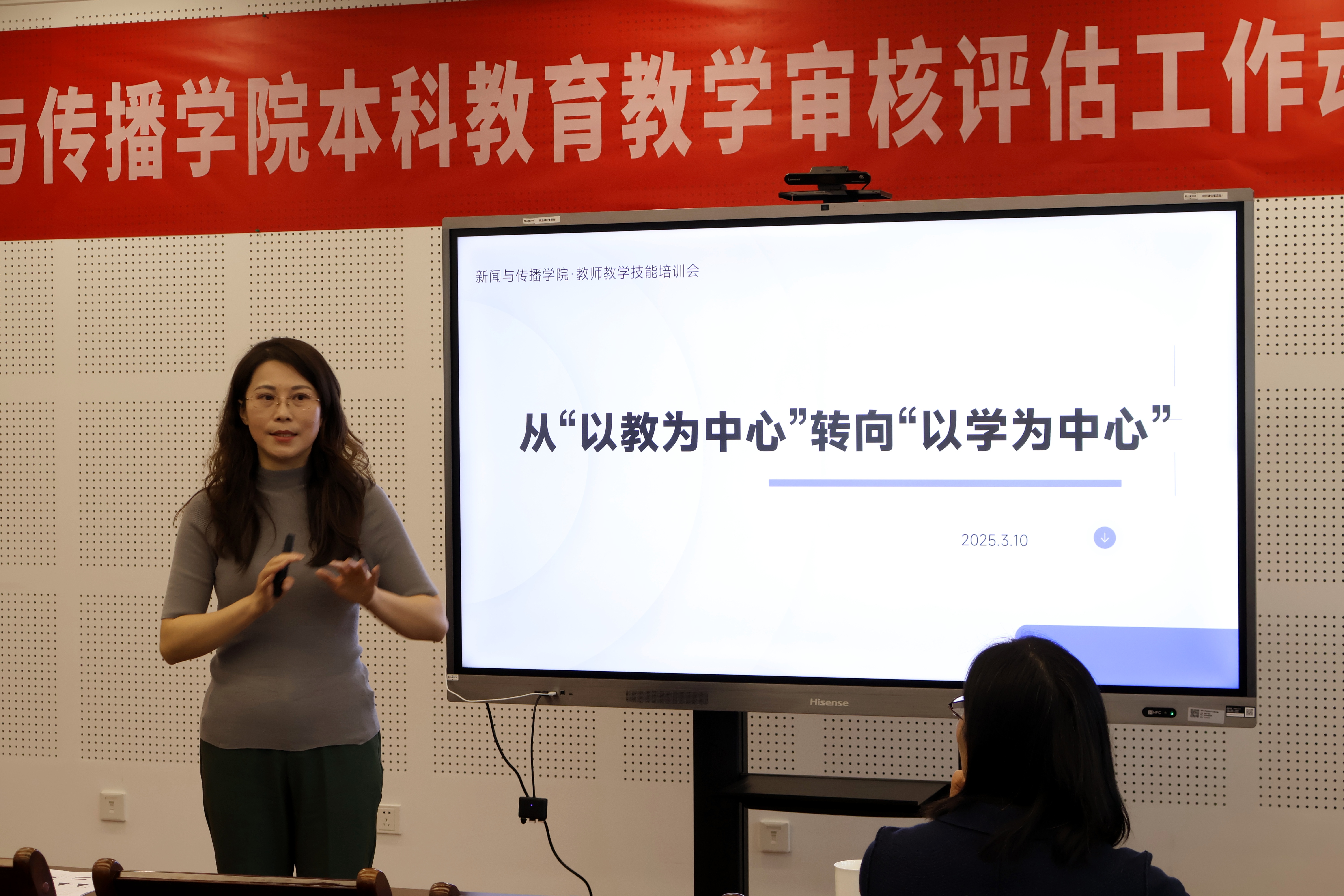To implement the university's task list for undergraduate education and teaching evaluation and the School's undergraduate education quality assurance plan, and to deepen teaching reform guided by the course construction standards of high-order, innovative, and challenging qualities, the School of Journalism and Communication held its first faculty teaching skills training session of the new semester on the afternoon of March 10, centered on the theme: shifting from a teaching-centered to a learning-centered approach. The training was delivered by Vice Dean Chen Na, with participation from all faculty members of the School.

Chen Na began with an in-depth analysis of why it is essential to enhance teaching capabilities, emphasizing that teaching is about not just transferring knowledge, but also developing abilities and guiding values. By citing American educator Ernest Boyer's concept of Four Scholarships, she highlighted that teachers should undertake the four academic missions of discovery, integration, application, and teaching, with particular emphasis on the core role of scholarship of teaching in talent cultivation. Additionally, drawing on Shulman's teacher knowledge base model, Chen Na provided theoretical grounding for enhancing faculty expertise across multiple dimensions, including subject knowledge, pedagogical methods, and educational context.
Next, addressing common misconceptions in traditional teaching, Chen Na argued that classroom teaching ≠ one-way lecturing. Instead, it should be a dynamic process involving empathy, interaction, and goal achievement between teachers and students. She introduced several teaching models independently developed by NKU: the O-AMAS Effective Teaching Model (designing of teaching Objective[O], rapid Activation[A], Multi-learning[M], effective Assessment[A], and brief Summary[S]), the P-MASE Research-based Teaching Model (Problem[P], Method[M], Analysis[A], Solution[S], and Evaluation[E]), and the 5E Teaching Model (Excitation, Exploration, Enhancement, Execution, and Evaluation). These models provide teachers with systematic tools from instructional design to outcome evaluation. Chen Na particularly stressed that teaching must focus on the three-dimensional goals of knowledge, ability, and value, avoiding classroom dilemmas such as no connection, no feedback, and no effect. The aim is to truly shift from focusing on how to teach students to how students learn, from fixed knowledge delivery to nurturing thinking individuals, from merely delivering content to ensuring student comprehension, thereby fostering students' holistic development.
The session concluded with Aristotle's insight that teaching is the highest form of understanding, leaving participants with ample room for reflection and discovery. Attending faculty members unanimously agreed that the training was both theoretically profound and practically valuable, providing clear directions for future innovations in teaching models and improvements in classroom teaching quality. They also expressed anticipation for future sessions in this training series.


